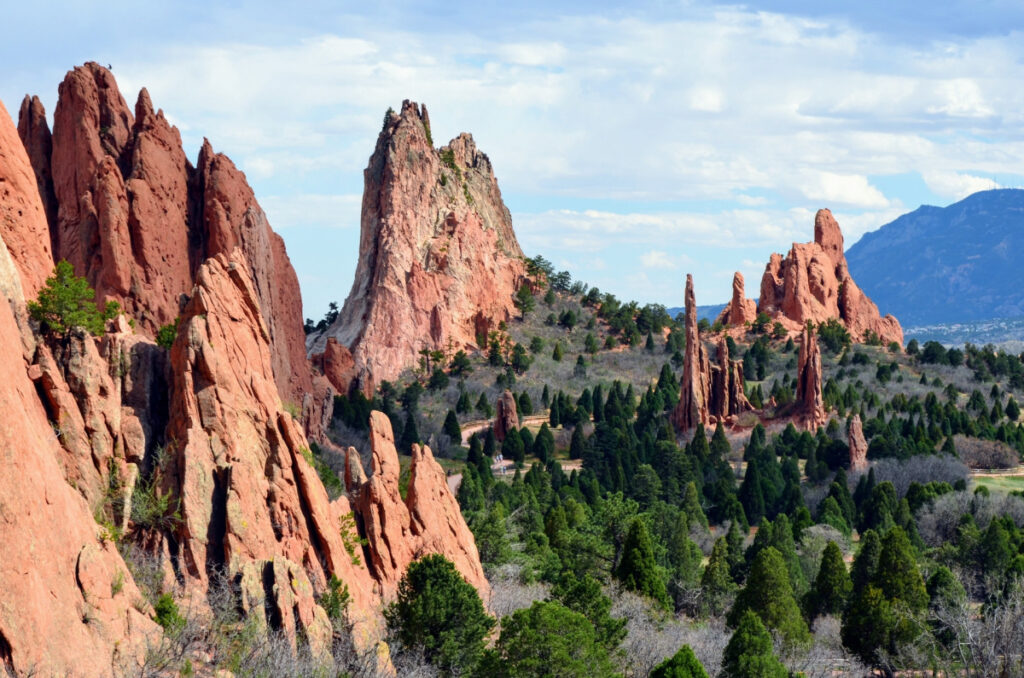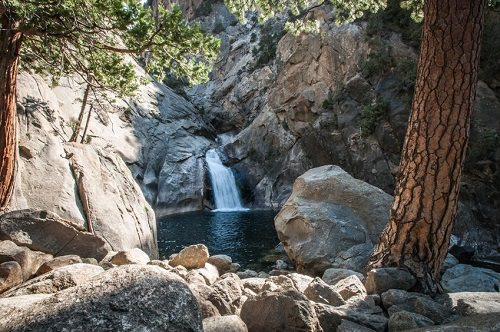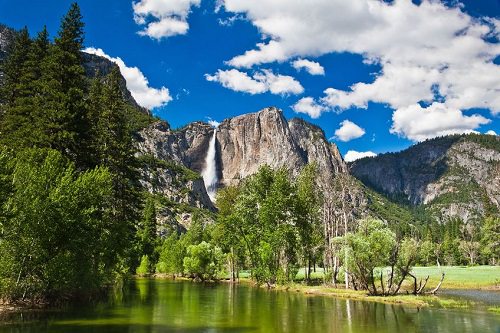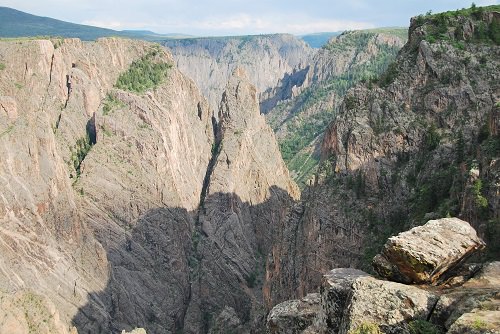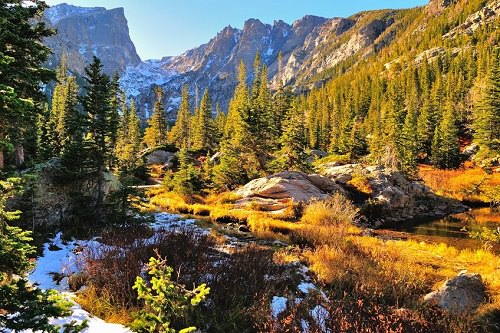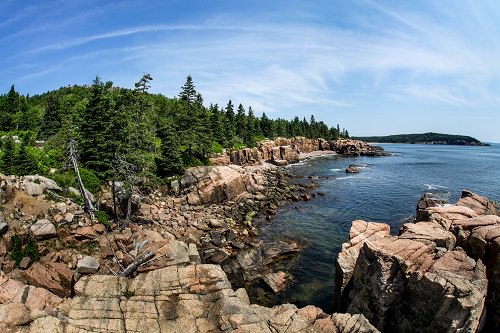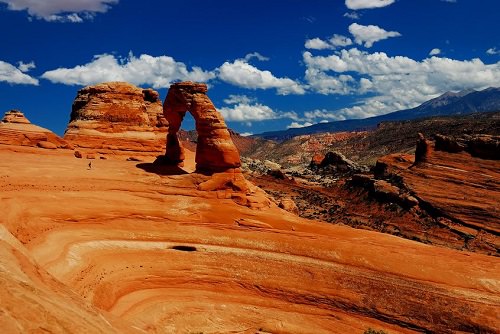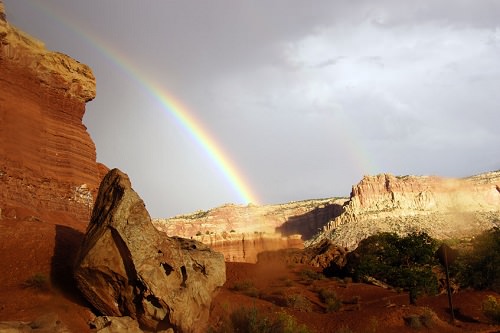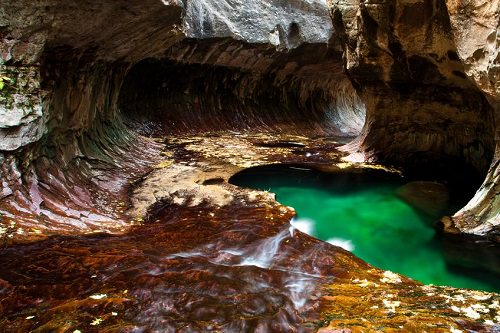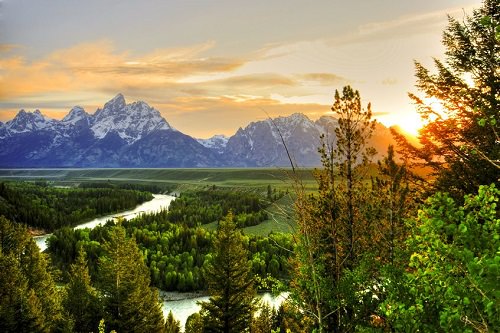Rock climbing is increasingly popular among outdoor enthusiasts and extreme sport practitioners. Technical advances in equipment and climbing techniques have made it popular to climb ever-steeper rock faces. Along with breathtaking scenery, America’s national parks provide some of the best rock climbing available in the world.
While rock climbing is possible in many areas across the United States, the best rock climbing requires steep cliffs and high altitude. Not surprisingly, many rock climbing locations are located in the western part of the country, where the rugged Rockies are a prominent feature of the natural landscape.
Read also – 10 Most-Visited National Parks in the United States
1. Joshua Tree National Park, California
Located in the southern California desert 225 kilometers east of Los Angeles, Joshua Tree National Park is a popular destination for tourists, rock climbers, photography, and nature lovers.
Joshua Tree National Park has earned a reputation for rock climbing. There are 4,500 established rock climbing routes contained within the 100,000 acres of Joshua Tree National Park. The park offers more than 8,000 documented rock climbing sites, most of which are bouldering and traditional climbing sites. In addition, there are several routes for sports climbing, although not so often.
More than 1,000,000 people visit Joshua Tree every year, producing trash and contributing to vegetation damage and soil erosion. Nonetheless, park rangers are committed to maximizing the enjoyment of all visitors to the park, including rock climbers.
2. Sequoia and Kings Canyon National Parks, California
Tall forests of sequoias soar above fast rivers. As the largest trees on the planet, giant sequoias grow together with extremely diverse species of other plants and animals. Sun-soaked foothills and snow-covered hills are a fantastic experience for all tourists. The networks of underground caves in the park are also unusual, and the brilliant crystal caves are easy to explore with a guide.
Located within the Sierra Nevada Mountains, Sequoia and Kings Canyon National Park includes glaciers, rugged rock faces, and steep inclines – all the features rock climbers desire. Climbing within the park is easy, which leads to crowds, especially during the summer. However, venturing a short distance away from the overcrowded John Muir trail rewards climbers with relatively unpopulated climbing territory.
Read also – 10 World’s Most Dangerous Mountains for Rock Climbing
3. Yosemite National Park, California
Featuring crack climbs and multi-day climbs along bare rock faces, Yosemite National Park in California is one of the most popular areas for rock climbers. Giant rocks, the cleanest rivers, grandiose waterfalls – the beauty of pristine nature in its almost untouched form is simply enchanting. At the same time, ideal roads, and good tourist infrastructure. And as a result, Yosemite National Park is visited annually by about four million people.
The steep cliffs are one of the main attractions of Yosemite, thanks to which the national park has become a place of pilgrimage for rock climbers from all over the world. One of the most challenging climbs is nicknamed El Capitan. Rock climbers consider El Cap one of the world’s most technically challenging climbs. It is said that many of the modern climbing techniques and technologies were developed right here in Yosemite by people who dreamed of one day conquering this peak by climbing its bare facade. El Capitan was first conquered in 1958 by a team led by Warren Harding after an effort that totaled 47 days over a course of 17 months. Recent climbers have conquered El Capitan in just over four hours.
Another famous rock of Yosemite is Half-Dome. It, like El Cap, is a granite monolith. It isn’t necessary to be a super rock climber to climb the tops of Kapitan and Half Dome. But it’s enough to be in good physical shape. Tourist trails lead to the tops of both rocks.
Read also – 10 Most Beautiful Forests around the World
4. Black Canyon of the Gunnison National Park, Colorado
Black Canyon of the Gunnison National Park is a United States national park located in the western part of Colorado and managed by the National Park Service. The canyon contains the most profound and beautiful part of the canyon, but the canyon continues upstream into Curecanti National Recreation Area. The name of Black Canyon is connected with the fact that parts of the gorge receive only 33 minutes of sunlight per day.
The canyon of very narrow Black Canyon of the Gunnison National Park in Colorado is 2,722 feet deep at its deepest point at Warner Point. The Painted Wall, the tallest vertical wall in the entire state of Colorado reaches a height of 2,250 feet.
Black Canyon is known for cliffs, and dizzying heights. Fans of extreme sports will enjoy it. Special areas for rock climbing are organized there. So, there are many opportunities for rock climbing, particularly for specialists. Most rock climbing takes place on the North and South Chasm walls of Black Canyon, with an average canyon depth of a dizzying 1,820 feet.
At first glance, it may seem that this area is lifeless. However, this opinion is wrong. Life is boiling in the Park! More than 170 species of birds and more than 60 species of mammals. For example, you can meet moose, deer, coyotes, cougars, and many others here. Since Gunnison’s Black Canyon is located in four climatic zones, the number of plants and wealth in these places is very significant.
Read also – 10 World’s Most-Visited National Parks
5. Rocky Mountain National Park, Colorado
Along with California and Utah, Colorado is a rock climber’s paradise, with numerous challenging climbs, including climbs within Rocky Mountain National Park. Mountain roads total 578 km, and the park has 150 lakes and 720 km of streams and rivers. More than three million tourists visit the park annually. People travel to explore the area’s beautiful mountain scenery, lakes, and rivers.
Climbing within the park has been popular since the 1800s. Everyone from the novice to the expert has a wide range of opportunities. You’ll find everything from a few hours of bouldering to multi-day big wall experiences. Lumpy Ridge and Longs Peak are especially popular with local climbers and with climbers from around the world. A wide spectrum of climbing here includes traditional alpine climbing, big wall, bouldering, snow and ice, and mountaineering.
While day use in the park does not require special registration or permit, those planning multi-day climbs or climbs that are 3.5 or more miles from the head trail consisting of four or more technical pitches will need a permit for camping.
As for biological diversity, according to existing data, in Rocky Mountain National Park, you can find more than 1000 species of flowering plants, 61 species of mammals, 280 species of birds, up to 7 species of fish, five species of amphibians, and one representative of the reptile class. The park is known for its large animal species, such as wapiti and stork, different species of hummingbirds, squirrels, and other species can be seen here.
Read also – 10 Most-Visited National Parks in the United States
6. Acadia National Park, Maine
Acadia National Park is the only national park in New England that boasts unspoiled scenery and abundant wildlife. Here, visitors can enjoy endless opportunities for rock climbing, hiking, kayaking, biking, or scenic views.
One of the few major rock climbing areas east of the Mississippi River, this parkis home to several excellent climbing areas. Otter Cliffs and Great Head provide rare sea cliff climbing challenges. The rock faces within Arcadia were created during the last period of continental glacier coverage in North America. Climbing enthusiasts will definitely not be bored here.
Along with the highest mountain on the US Atlantic coast, the 46,000-acre park includes several other mountains, lakes, ponds, beaches, forests, meadows, and cliffs. These diverse environments provide a habitat for a huge variety of plants and animals.
Read also – 10 Most Unusual Buildings in the World
7. Arches National Park, Utah
Arches National Park is located in the state of Utah, 8 kilometers from the city of Moab. The park is one of the largest in terms of the number and density of the world’s accumulations of extraordinary geological sandstone natural arches – rock formations in the form of arches, bridges, and gates formed as a result of rock erosion. Among them are arches in a great variety of colors, shapes, and outlines, of which there are more than 2,000 pieces, from three to three hundred feet high from the base.
The rock at Arches National Park in Utah is sandy; nonetheless, the park features excellent climbing areas. Most of the rock climbing routes contained within Arches National Park are meant for advanced climbers only. Overnight trips in the back country of the park require permits while day climbs do not.
Visitors to Arches National Park can also enjoy sightseeing year-round, but most prefer to visit between March and October. For a comfortable rest in the park, it is possible to move around it not only on foot but also on specially equipped roads by bicycle or personal vehicle.
Read also – 10 Most Endangered Forests in the World
8. Capitol Reef National Park, Utah
Capitol Reef National Park is located in south-central Utah. This national park, located on approximately 240,000 acres, is filled with domes, canyons, cliffs, arches, and towers. It is mainly visited in the summer but is a fantastic place to visit any time of the year.
Formerly, not frequented by rock climbers, because of its sandstone rock faces, Capitol Reef National Park has become increasingly popular for climbing. The park has many climbing routes, usually accessible to experienced climbers. The hardness of the sandstone contained within Capitol Reef varies from soft and crumbly at Entrada to relatively hard at Wingate. Wingate is the most popular area for climbing because of its many natural cracks for climbing without technical equipment.
Top attractions in Capitol Reef National Park are Pocket Falls, Hickman Bridge Trail, Capitol Gorge, Grand Washington, Hickman Natural Bridge, Capitol Reef, Fremont River, Cathedral Valley Road, Cohiba Canyon, Goosenex View, Gifford Estate, Temple of the Sun, Thousand Lake Mountains, Panorama Point, Cassidy Arch Trail
Read also – 10 Most Beautiful National Parks in Europe
9. Zion National Park, Utah
Zion National Park, with its area of more than 229 square miles, more than 35 hiking trails, and cliffs rising more than 2,000 feet above the canyon bottom. It’s an environment of magic and natural charm that will challenge what you thought of the possibilities of nature. Zion National Park will be incredibly interesting for people who prefer a comfortable vacation and for active, even extreme recreation lovers.
Unlike many rock climbing areas that contain harder rock faces, the relatively soft sandstone contained within Zion National Park in Utah requires advanced climbing skills and appropriate technical equipment to navigate its rock faces. Visitor centers located within the park provide useful climbing information. When Peregrine falcons are nesting, many areas within the park are closed for climbing. Overnight climbs require a permit.
Read also – 10 Most Futuristic Buildings in the World
10. Grand Teton National Park, Wyoming
Grand Teton National Park is located in northwestern Wyoming, USA. It has an area of about 130,000 hectares and includes most of the Teton mountain range and the northern part of the Jackson Hole valley.
Easily accessible with high-quality rock, Grand Teton National Park in Wyoming contains some of the nation’s best rock climbing areas. As a result, rock climbing is extremely popular among relative amateurs and advanced climbers alike. Jenny Lake Ranger Station provides useful rock climbing information and equipment from June to mid-September. Moose Visitor Center provides information during the rest of the year.
Many national parks, including Yosemite and Zion are protected wilderness areas that feature sensitive wildlife preserves and which house delicate ecosystems. Because of this, rock climbers, along with other visitors to the park, must exercise respect for the environment in order to inflict the least possible amount of harm. Climbers should bolt only when necessary and repair bolted areas with stone-colored webbing.
The nature of the park is almost untouched. More than 1000 species of vascular plants, 300 species of birds, 61 species of mammals, 4 species of reptiles, 6 species of amphibians, and thousands of species of insects live in the Grand Teton. The park is a popular place to visit and offers various types of recreation.

